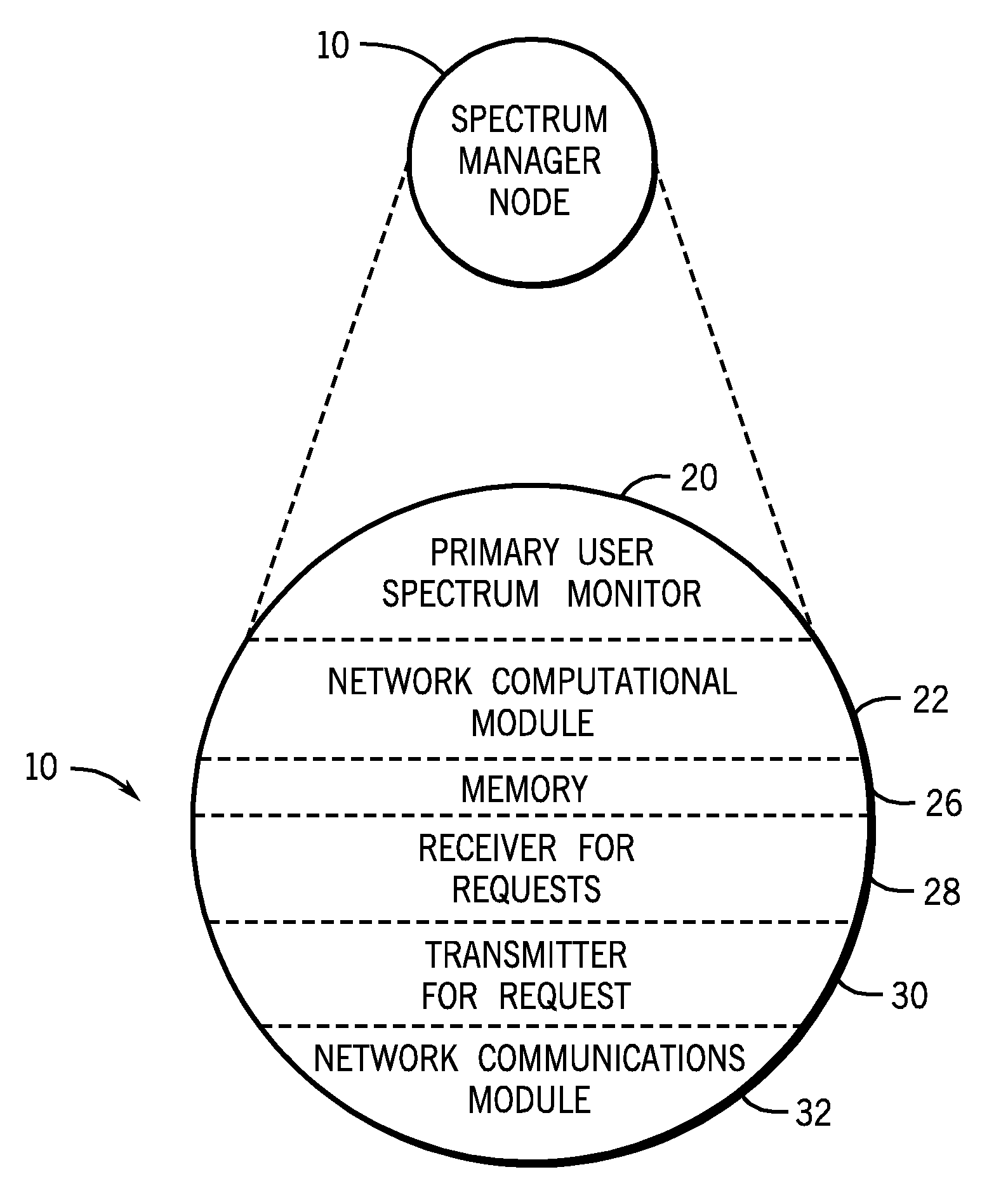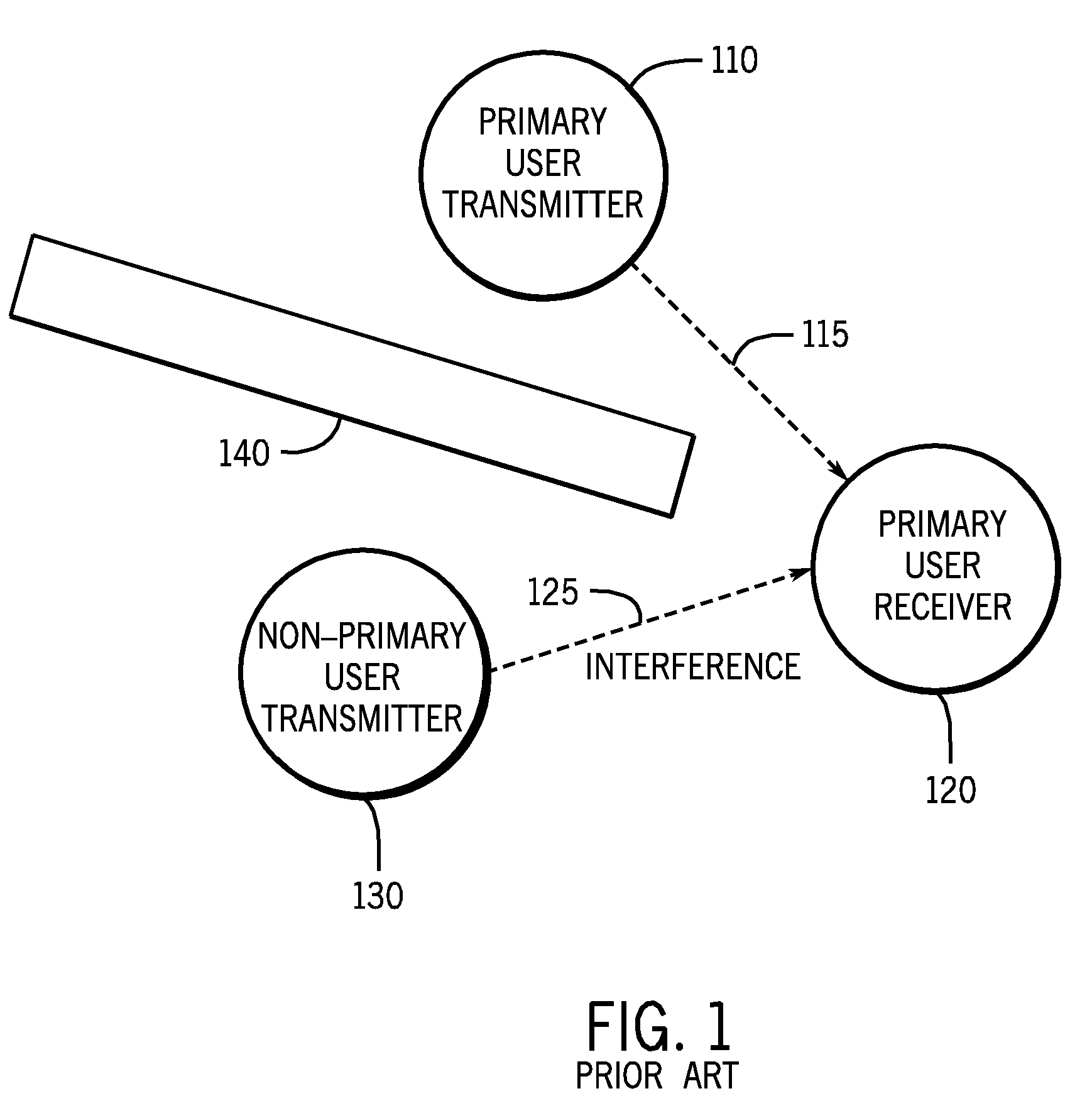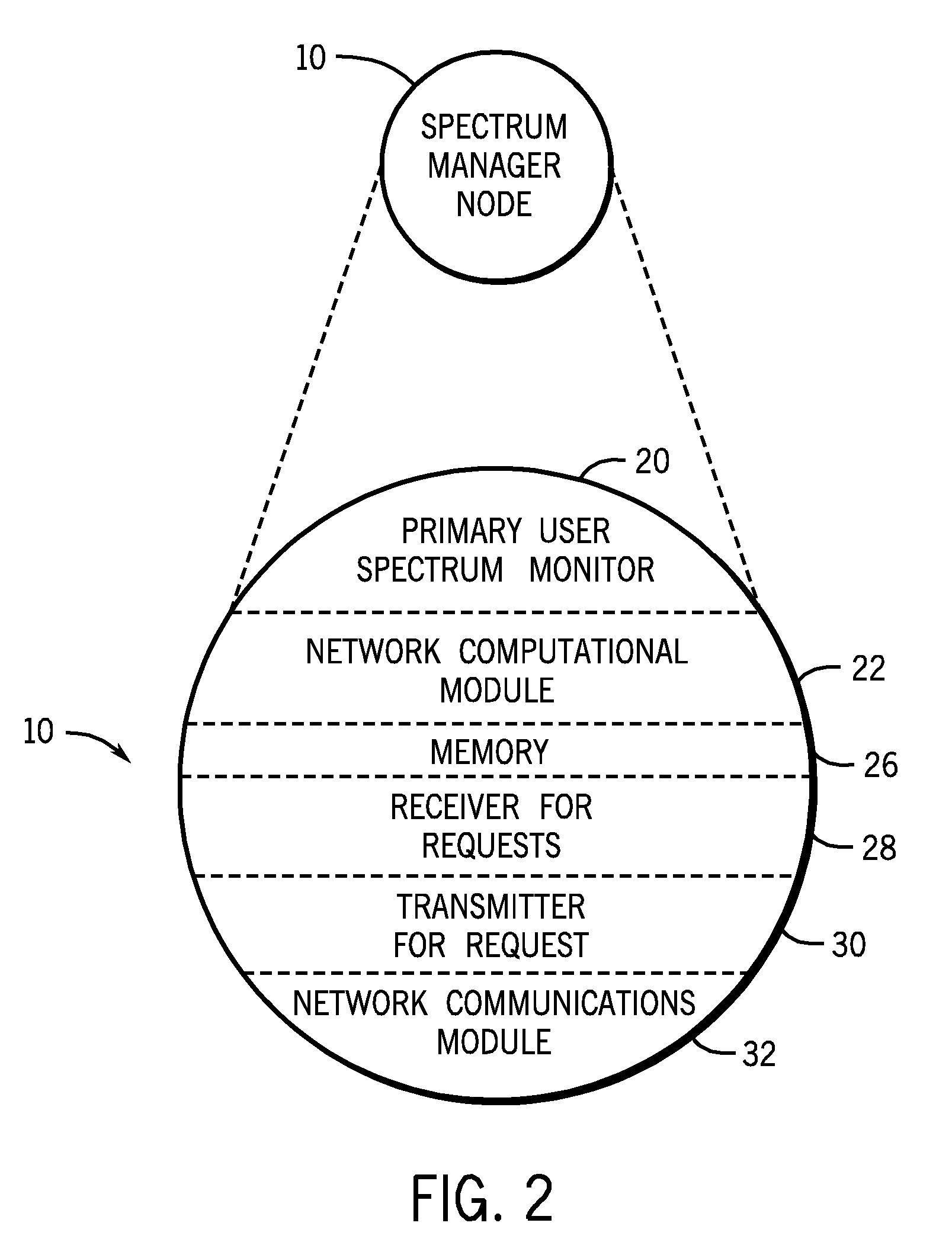Quiet Spectrum Harvester
a spectrum harvester and quiet technology, applied in the field of radio spectrum use, can solve limited wireless communication on the radio spectrum, and failure and achieve the effect of overcoming the problems of ineffective historic allotment of bands and overcoming the inability to meet the needs of the publi
- Summary
- Abstract
- Description
- Claims
- Application Information
AI Technical Summary
Problems solved by technology
Method used
Image
Examples
Embodiment Construction
[0016]The embodiments disclosed herein provide a quiet spectrum management method and system. As provided, the radio spectrum may be monitored by one of a series of spectrum manager nodes to determine if a primary user is transmitting. If a portion of the assigned spectrum is quiet, a spectrum manager node may receive and grant a request to temporarily assign that portion of quiet spectrum to a non-primary user, i.e., a secondary user. The spectrum manager node may also override use by non-primary users when a primary user begins to transmit. In one embodiment, a spectrum manager node may broadcast information about the available spectrum, without interfacing with or brokering usage by secondary users.
[0017]The disclosed embodiments overcome difficulties in correctly identifying quiet spectrum that are associated with previous techniques. One disadvantage of previous techniques for harvesting quiet spectrum is the hidden node problem, illustrated in prior artFIG. 1. As depicted, a p...
PUM
 Login to View More
Login to View More Abstract
Description
Claims
Application Information
 Login to View More
Login to View More - R&D
- Intellectual Property
- Life Sciences
- Materials
- Tech Scout
- Unparalleled Data Quality
- Higher Quality Content
- 60% Fewer Hallucinations
Browse by: Latest US Patents, China's latest patents, Technical Efficacy Thesaurus, Application Domain, Technology Topic, Popular Technical Reports.
© 2025 PatSnap. All rights reserved.Legal|Privacy policy|Modern Slavery Act Transparency Statement|Sitemap|About US| Contact US: help@patsnap.com



